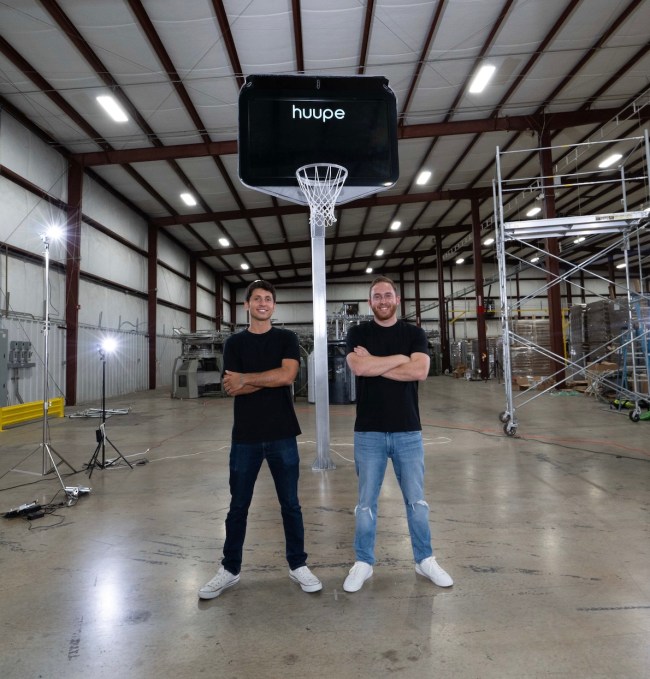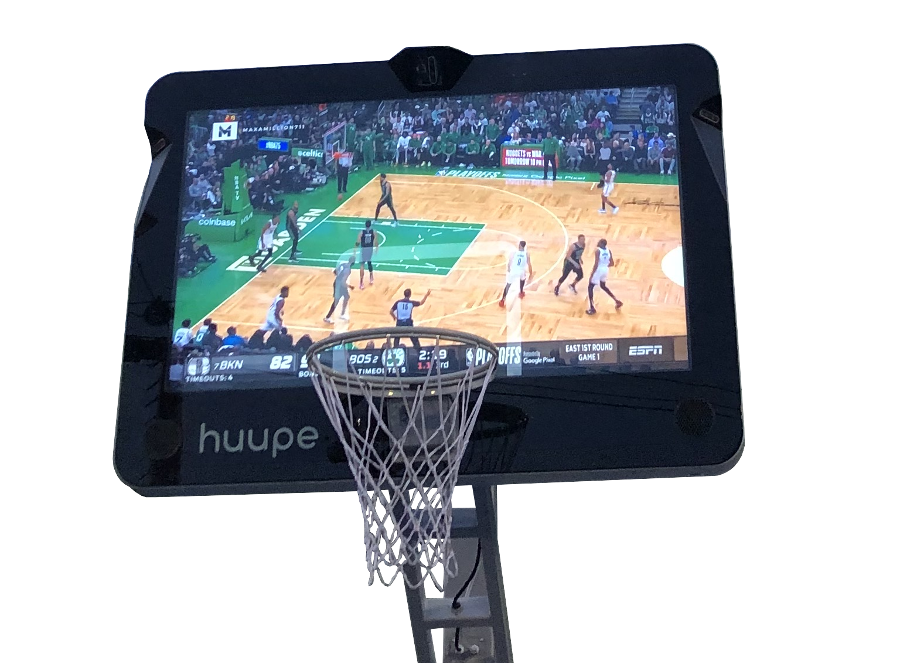Products You May Like
Basketball can be played just about anywhere and by anyone in the U.S. and now many other parts of the world, thanks to a confluence of factors that lower a lot of barriers: ubiquitous hoops set up in parks, schools, driveways and backyards; you can play with one or many; and the only other equipment needed is an inexpensive ball. But for those who want to improve their game, or keep up training to play at a higher competitive level, the options — as they do for all sports — narrow down considerably. A startup called “Huupe” (pronounced “hoop”) is hoping to change that with a new product built around the concept of a smart basketball hoop, alongside a content network of training videos that Huupe owners can watch while playing. It’s raised $11 million to build out that game plan.
Co-leads on the round were Protagonist VC, Marvan Ventures (the firm from Milwaukee Bucks minority owner Keith Mardak), TRI Investments, and Kawn VC. Genesis Ventures and Reform Ventures (NBA player Thaddeus Young’s venture fund) also participated.
Huupe’s product and business model combine a mix of hardware, software and media streaming. The physical component starts with a connected basketball hoop that picks up data about balls that are sunk through it, or hit it, or do not. It’s ruggedized and waterproof, and the startup says that it’s as robust as a regulation hoop. Behind that is the backboard, which is made from a video screen equipped with computer vision, covered by the same enforced glass used for backboards in professional courts.
The video screen displays videos of basketball coaches, trainers and players that users can watch as training sessions, which can be used by individuals or groups. Together the computer vision with the content work in tandem to track and respond to how people are playing and what they need to work on to get better. The experience is reminiscent a bit of Peloton and other connected exercise equipment. As with many of those products, Huupe’s video screens can also stream other kinds of video content, from basketball games through to whatever it is that you want to watch.
The full package starts at $49.95 and $64.95 depending on the size you order for the screen, while subscriptions for content come on top of that, and they are currently priced at $30/month.
Huupe is clearly subsidizing the cost of the hardware at those prices, but CEO Paul Anton told me that the idea is that over time, as production scales, overall prices will lower.
The idea for the product came out of the direct experience of the two co-founders. Anton and Lyth Saeed (COO) were childhood friends in Milwaukee who used to play basketball together, and when the two got older and lived further apart — Anton studied IP law and moved to the Bay Area to work; Saeed was building his first startup, a transport app called QUp, in Dubai — they started talking about how they could keep up with playing remotely.
“How could we still play basketball together in two cities?” Anton asked. The pair tried using chat apps and other kinds of hacks at first. But with the startup bug fully in effect in the middle of last decade — with funding opportunities and the number of startups rapidly expanding around the world — eventually they decided to leap into the unknown themselves, starting Huupe to provide an answer to that question.

A hardware startup, as the saying goes, is hard, perhaps even more so for founders who have never built something like this before. Huupe has actually been around since 2015, and it was bootstrapped for years as the pair tinkered on the idea first as a side hustle and then as a primary focus, building prototypes in and outside the proverbial startup garage. Huupe eventually raised its first outside money, a seed round, last year.
The story overall is a little grassroots like basketball itself, which is partly what seemed to attract investors.
“We love the team; they are super scrappy and hard-working,” said George Bousis, the co-founder of Protagonist, which last year announced a $100 million crypto fund but invests in other kinds of tech, too. “They have a big vision of where they see the company going and, thus far, have a great understanding of the market; they’ve built a great product and have a ton of potential, given the early metrics. We really like the collaborative element of playing with friends in person or across the country and the sense/feeling of community that can be developed over time. It’s super fun, interactive, and actually works (admittedly, I’m pretty bad at basketball but found myself wanting to get better given the gamification/experience).”
And while the initial marketing push is aimed at consumers, Bousis believes there is market potential beyond that. “We think gyms/fitness centers, community courts/centers, schools, and so on are a natural fit.” The cost right now may be unnaturally low — and the founders declined to talk about total actual cost when I asked — but Bousis pointed out that the average price of a premium basketball hoop typically starts at $2,500, and that is without the interactive and educational elements that Huupe has built in. Anton and Saeed tell me that there were some 4 million hoops sold globally every year, and decades have passed with virtually zero innovation on the basic structure of those hoops, so you can see where the beginnings of opportunity lie. (U.S. figures for overall basketball equipment sales have steadily been on the rise for years, with a special boost during the peak of Covid-19.)
There have been various startups targeting hardware to enable playing different sports, but interestingly a lot of the activity around basketball has been around gaming and gamification, with startups like Gym Class and Dapper Labs (which makes NBA Top Shot) catching the eye of users and investors.
That means there are lots of directions, and not much in the way if competition or precedence, that Huupe might develop if it breaks through in the basketball equipment market. One that it does not want to pursue are other accessories or “peripherals” for basketball playing like shoes, balls, or anything else.
“We are not into wearables,” Saeed said, classifying anything like connected shoes as part of that category. “We view using that as akin to cheating if it becomes too easy to do better.” That said, if people are using Huupe as part of their home fitness regime, then there is a merit to the program integrating with other trackers to measure activity.
He added that there are other sports it’s considering as well that are not unlike basketball in their basic architecture: lacrosse, soccer and hockey are on its list, he said.
